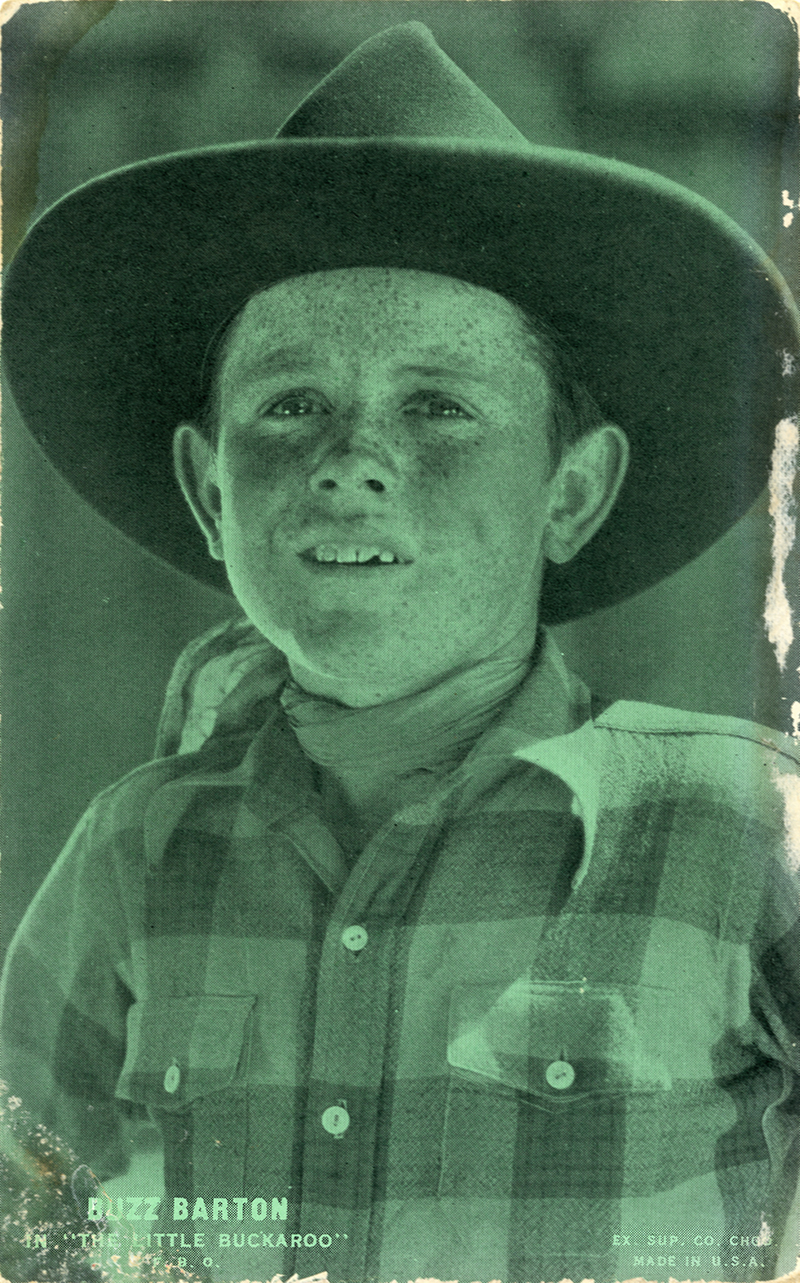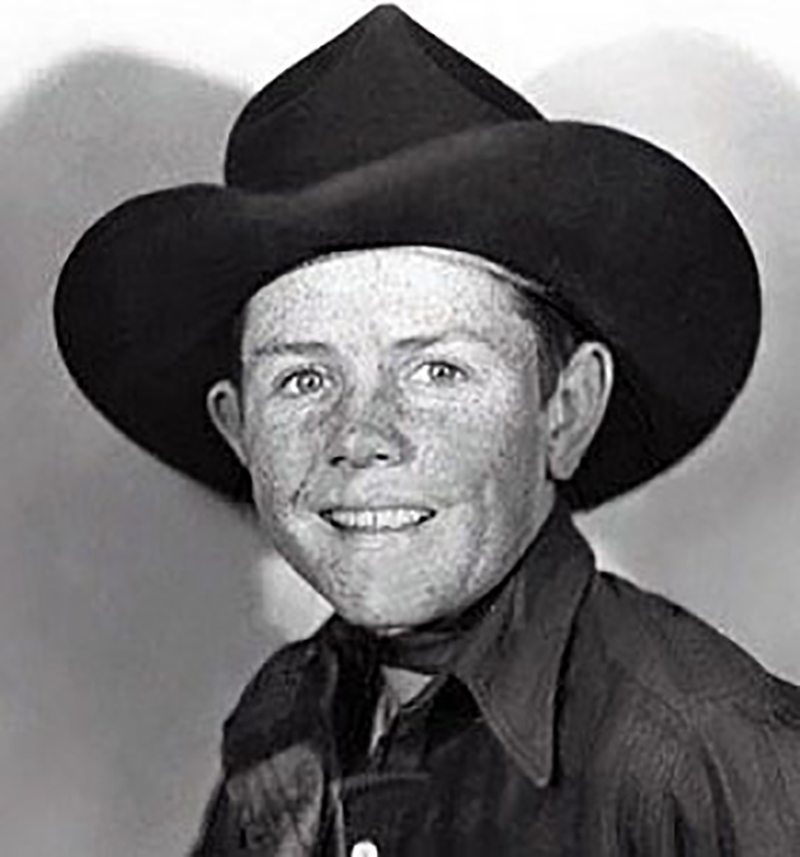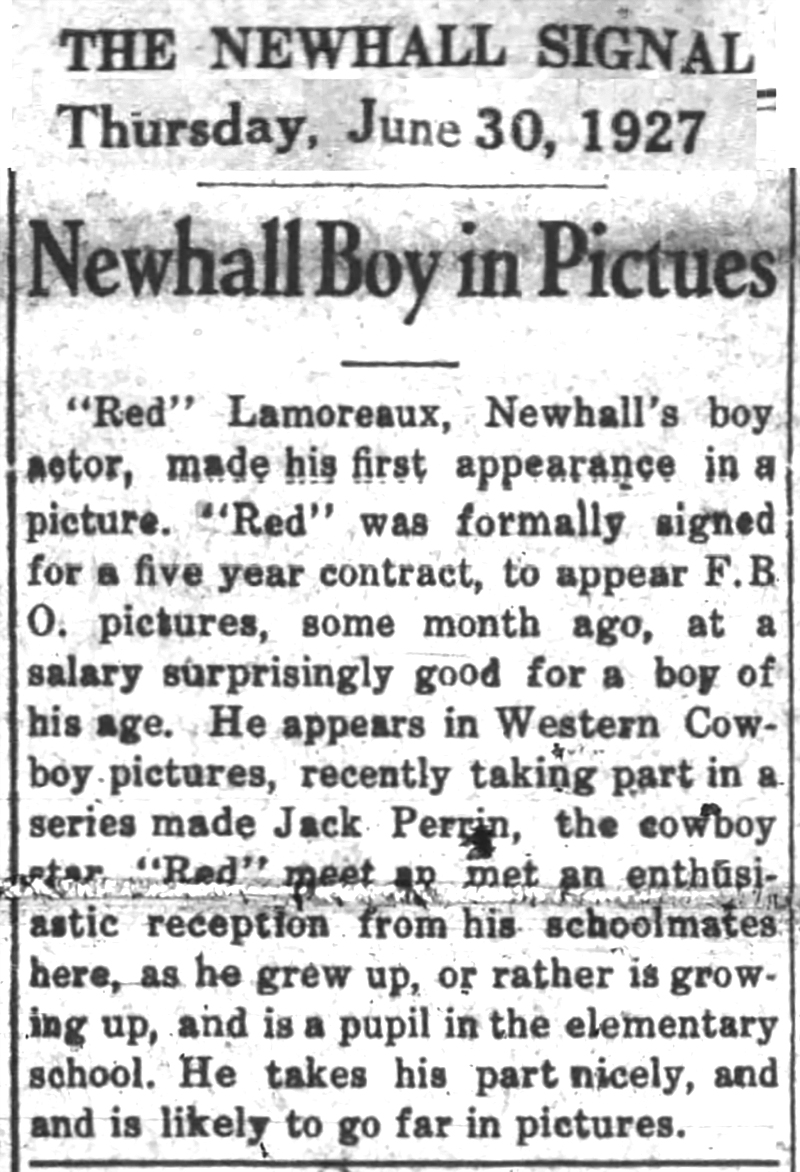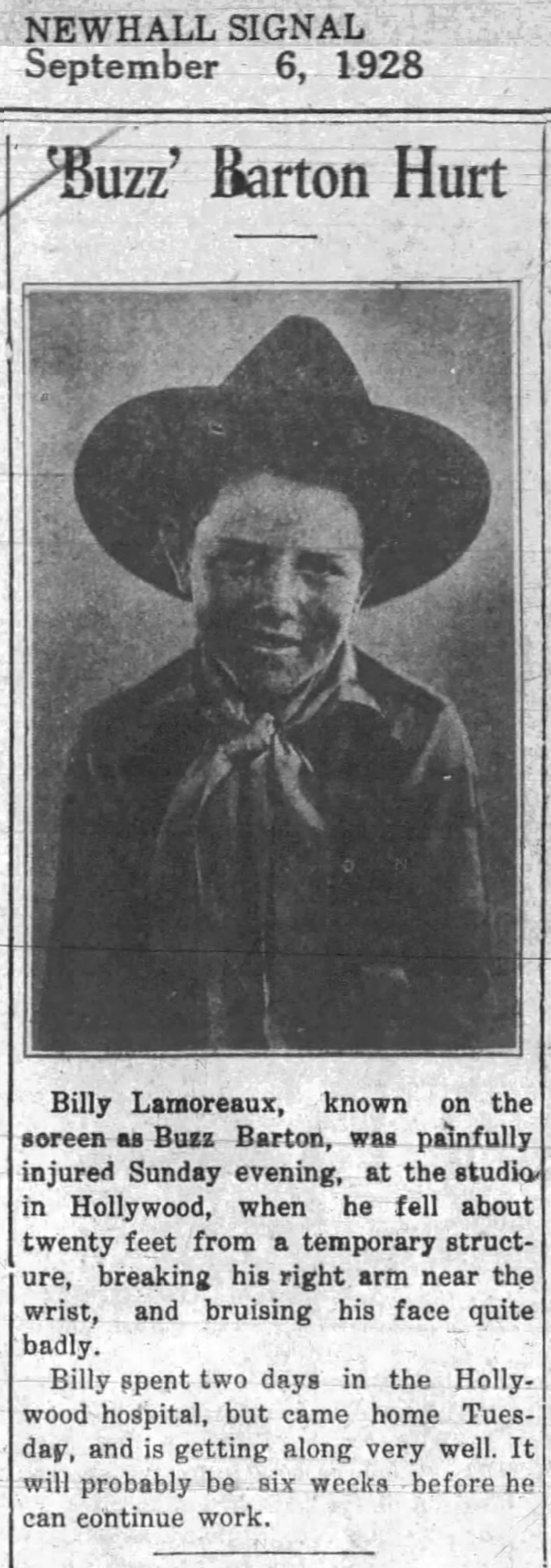|
|


Click image to enlarge
Arcade card advertises Newhall resident and child actor Buzz Barton (real name William A. Lamoreaux) playing the title role in "The Little Buckaroo" from FBO, 1928. Back is blank. Standard references list 1927 as the year of issuance for this variety of collector card from Exhibit Supply Co. of Chicago — light green with "EX. SUP. CO. CHGO. / MADE IN U.S.A." at lower right. But "The Little Buckaroo" premiered in theaters February 25, 1928, so this style obviously outlasted the end of 1927. 1927 was a significant year for Lamoreaux: It's the year he left one poverty-row studio (Rayart) for another (FBO/Film Booking Offices of America). At Rayart he played supporting roles as Billy Lamar; FBO gave him the catchier moniker and starring roles — at least until he physically outgrew his ability to play a youth. We don't know where "The Little Buckaroo" was filmed, but it was produced by Robert N. Bradbury, who would make films all over the Santa Clarita Valley in the early 1930s (especially in Placerita Canyon and Vasquez Rocks), usually starring his own son, Bob Steele, or his son's old high school buddy, John Wayne. "The Little Buckaroo" is directed by Louis King from a story by Frank Howard Clark (scenario by Oliver Drake). It also features Milburn Morante, Peggy Shaw, Kenneth MacDonald, Al Ferguson, Walter Maly, Bob Burns, Florence Lee and Jim Welch.
LW3291: 9600 dpi jpeg from original arcade card purchased 2018 by Leon Worden.
|
The site owner makes no assertions as to ownership of any original copyrights to digitized images. However, these images are intended for Personal or Research use only. Any other kind of use, including but not limited to commercial or scholarly publication in any medium or format, public exhibition, or use online or in a web site, may be subject to additional restrictions including but not limited to the copyrights held by parties other than the site owner. USERS ARE SOLELY RESPONSIBLE for determining the existence of such rights and for obtaining any permissions and/or paying associated fees necessary for the proposed use.












